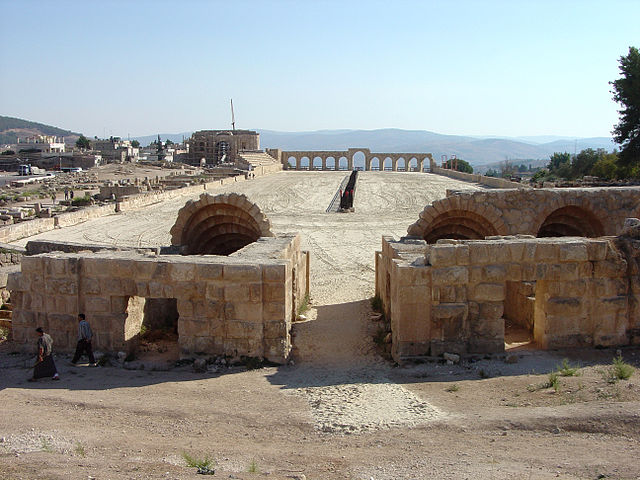Today, we headed 50 km northwest of Amman, Jordan, to one of the largest archeological sites in the World.
Jerash has been inhabited since the Bronze Age. The city Gerasa was established by Alexander the Great in 330 BC. Several Greek inscriptions can be found throughout the site.

Gerasa was one of ten cities, the decopolis, which formed the eastern flank of the Roman Empire in the Levant. Rome built on top of the existing Greek site and expanded the city with a huge hippodrome for chariot racing. The hippodrome was 245m x 52 m and could seat 15,000 people.
View from the north of the hippodrome

In honor of Hadrian, a giant triumphal arch was constructed to the south of the city. There were plans to make this the main gate, but the planned expansion was eclipsed by conflicts.
The ruins are immense. Three significant earth quakes during the last 1800 years have altered the geography resulting in a much hillier area. Much of the site has been reconstructed during the past five years.
The main city gate leads to a oval plaza. The temple of Jupiter sits on a hill to the east of the plaza. There were several other temples within the city.

The Cardo Maximus, the main north south route of the city, is over 800 m long with a city sewer system running underneath. The original ionic columns were replaced with ornate Corinthian columns in the 2nd century AD. The stones along the route are the original Roman stones with visible ruts from chariot wheels.
There are two theaters on the site. The southern theater accommodates 3000 spectators and has excellent acoustics.

Only 25% of the site has been unearthed. The remaining 75% is under the modern city.

The ruins were spectacular. Tomorrow, we head to Petra.
Til Petra,
Denise